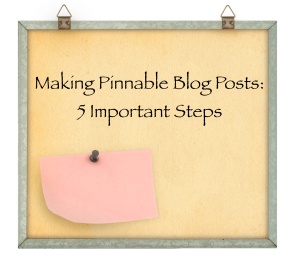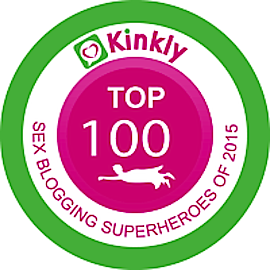I was 8 when I received my first bulletin board. *sigh* Memories… *pauses to ponder whether non-to-be writer kids cherish cork boards* My family had just moved to suburbia, and to ease the angst of moving, my mom bribed me with gave me Sweet Valley High and Babysitter’s Club mysteries. (Smart woman. ;)) So guess what landed on my board? Photos of my favorite books and characters, and anything else I found compelling—Paula Abdul, hot pink and purple what-evers, our family dog, my BFFs and code names for boys I totally did not have crushes on.
That, my beautiful friends, is Pinterest in a nutshell—virtual cork boards to fill up with content we’re intrigued by. And like childhood cork boards, they reflect our interests, personalities, goals and dreams. For bloggers, they are also visual platforms that can enhance our blogging/writing brands.
Whether you’ve joined Pinterest or not, your blog posts may have.* We can respond to this with an aggravated, “How dare they pin my stuff without asking?!?!” attitude, or appreciate the promotion and accept the fact that making our posts more pinnable can be highly beneficial. As the current fastest growing social media platform, Pinterest offers bloggers a fun, visual way to connect with readers we might not connect with otherwise. Cool, right? And because it’s a top referral to many online retailers, those of us with books or other products for sale have multiple reasons for excitement.
In my last Pinterest post, I focused on 7 keys for blogging/pinning success. Today, we’re digging deeper into the blog posts themselves. **If you’re a Pinterest brand-newbie, take a peak at the Pinterest Getting Started guide. If you’d like an invite to Pinterest, drop me a note. Trust me, it’s less confusing once you get started. 😉
 1. Start with compelling content. Most successful blog posts have a common denominator: compelling content. Sure, it helps if the text, format and backgrounds are clear and the topics are tagged well and popular. But from my experience in reading and writing posts, the stronger the content, the more eyes and interest they gain. (If your heart races a bit at the thought of a topic, you’re probably on to something… ;))
1. Start with compelling content. Most successful blog posts have a common denominator: compelling content. Sure, it helps if the text, format and backgrounds are clear and the topics are tagged well and popular. But from my experience in reading and writing posts, the stronger the content, the more eyes and interest they gain. (If your heart races a bit at the thought of a topic, you’re probably on to something… ;))
2. Feature a fabulous, topic-specific image. Using an adorable koala bear photo is a great idea if your post somehow relates to animals. But using an animal photo just because it’s cute and you think people will pin it isn’t the best idea. Why? Because people will pin the photo, but they’ll be less likely to click to read the connected post. Or they’ll be disappointed when upon clicking the koala bear, they find a “how to de-lint your carpet” post (unless they happen to love koalas AND struggle with lint-laden rugs). It’s better to have a simple graphic that ties into your topic than to be cute but on two different planets.
Photos that work—and don’t infringe on copyright violations:
- Your own snapshots and graphic creations. If you have visual arts skills, use them! If you don’t, now’s a great time to start practicing. I use my camera more often since joining Pinterest; you never know when a great photo opp will arrise—including those that require little, if any, expert skills. 😉
- Purchased photos upheld by the Creative Commons license, which is a legal code that allows you to utilize images freely. Many Flickr users offer uphold CClicensure. You can also enter keywords into the CC Searchtool,which will take you to independent companies that offer CC-friendly works. Once you find an image, look for the CC license trademark. If
 you don’t see this—> contact the site owner.
you don’t see this—> contact the site owner. - Free (not stolen) images. Many stock photo companies offer free images. To find them, Google-search “free stock images.” TurboPhoto.com, iStockPhoto.com and Getty Images all offer royalty-free, affordable and/or totally free images. (When I use such images, I add text, crop them or combine them with other graphics to make them unique. More on this below.)
- Fellow artists’ work, with permission. If you’re in love with a particular image, contact the creator. As long as we credit artists’ work properly, many are happy to share work samples. If you have an artistically-inclined friend, team up! By working together, you can both benefit.
3. Enhance your images with text or other “tweaks.” I’m not very graphics art-inclined, yet have been able to edit images and add simple text using Artboard—a Mac app I found on iTunes. Trust me: If I can do it, you can. I’ve also heard great things about PhotoShop and PicMonkey. Add your web address, a powerful quote that ties into your blog post or your post title—whatever floats your blogging/pinning boat.
4. Use easy-to-read text. When adding text to images, the words may read loud and clear until you make them into a smaller image on your blog, and smaller yet on Pinterest. Particularly if the words are the focus of the image, i.e., you’re featuring a quote, use bold, extremely legible font.
5. Invite blog readers to pin your posts by implementing Pinterest share buttons. Adding the “Follow Me on Pinterest” button to your blog also helps, by showing your readers you’re in the game. Notifying your current readers that you’ve joined Pinterest and that they’re welcome to pin your posts isn’t a bad idea either.
Once you’ve created a Pinterest-friendly post, pin it along with intriguing text that gives readers a feel for the post. To make it even easier for pinners to read your post, paste the address after the description. Then, use hashtags as you would on Twitter. You can also tag others in your post by adding their Pinterest handle. If your account is linked with Twitter, insert the Twitter handle of anyone featured in the post. If I’m posting a link by talented writer Lisa Hall-Wilson, for example, I’ll put @Lisa Hall-Wilson to ensure that she’s notified. If I want to tag her on Twitter, I’ll add @LisaHallWilson.
*To learn if your blog has been pinned, plug this into your web browser, with your site inserted: http://www.pinterest.com/source/WEBSITENAME.COM.
I’d love to hear from you. Are your posts already Pinterest-friendly? Any tips to add? How has Pinterest helped your own blog?








